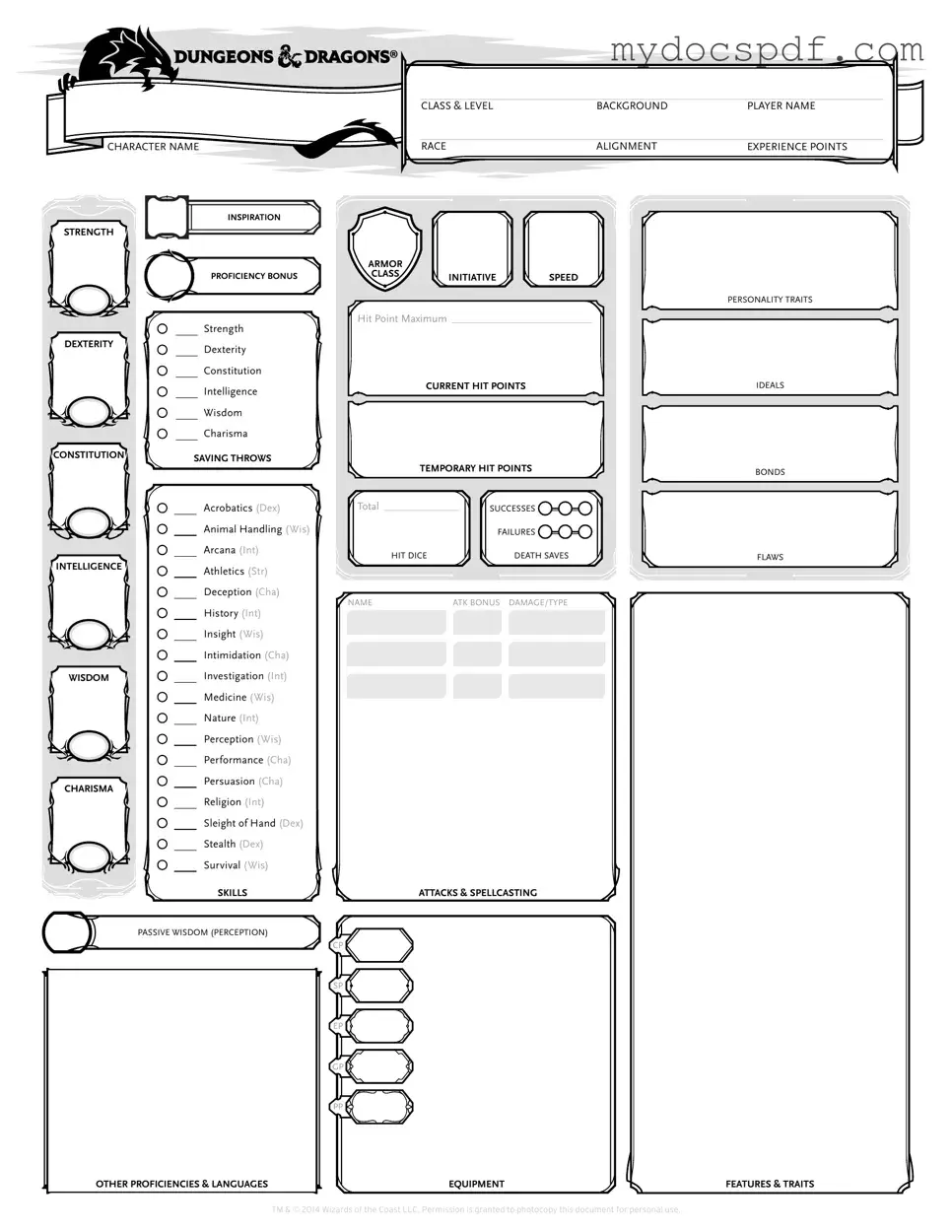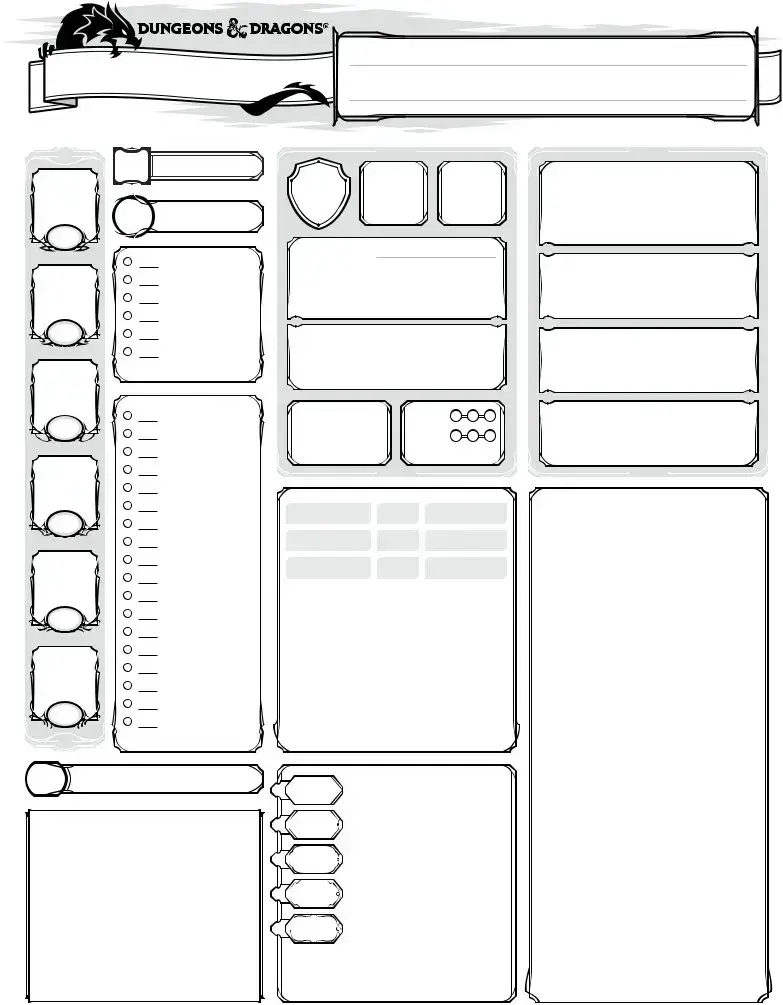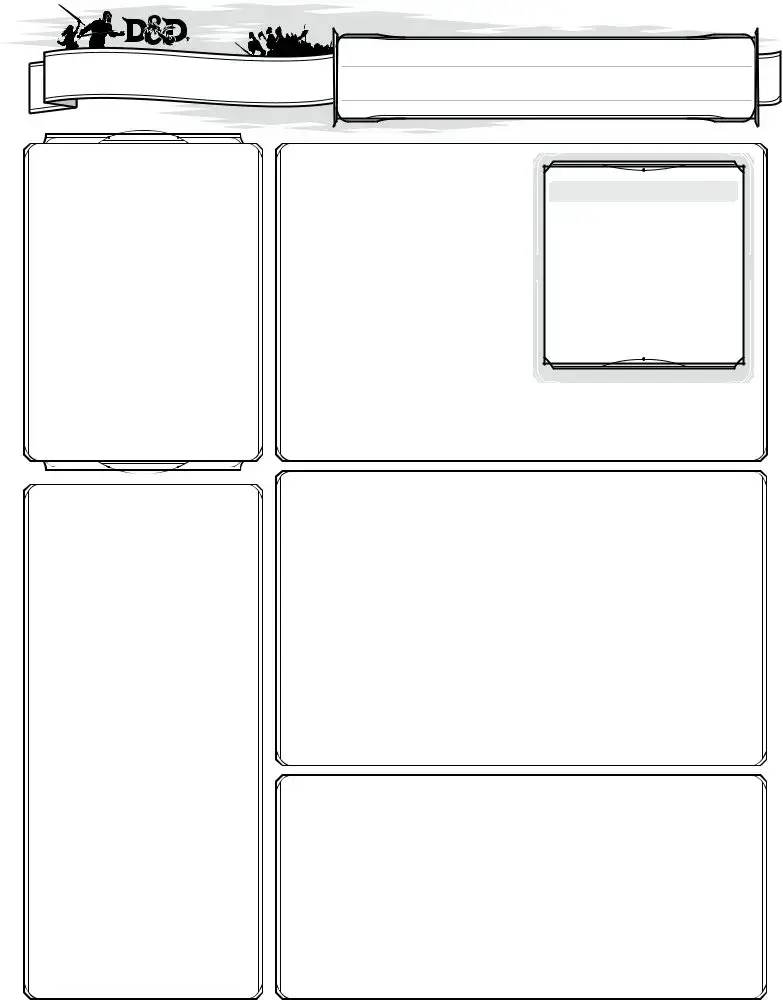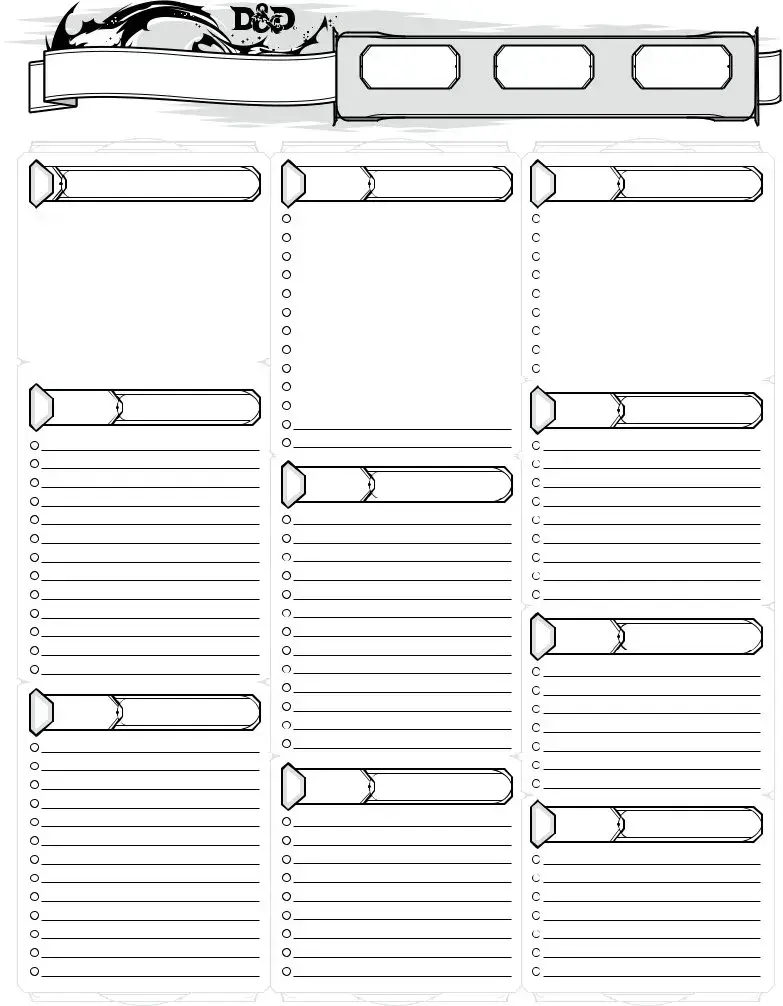The Dungeons & Dragons (D&D) character sheet is an essential tool for players, serving as the foundation for their gaming experience. This form captures a character's unique traits, abilities, and backstory, allowing players to immerse themselves in the fantasy world. Key components include the character's name, race, class, and background, which together shape their identity and role within the game. Additionally, the sheet outlines important statistics, such as hit points, armor class, and skills, which determine a character's effectiveness in various situations. Players also record their character's equipment, spells, and special abilities, providing a comprehensive overview of their capabilities. The character sheet not only helps in tracking progress throughout the campaign but also enhances the storytelling aspect of the game, as each character evolves based on choices made during play. Understanding how to effectively utilize this form can significantly enrich the D&D experience, making it a vital resource for both new and seasoned players.













